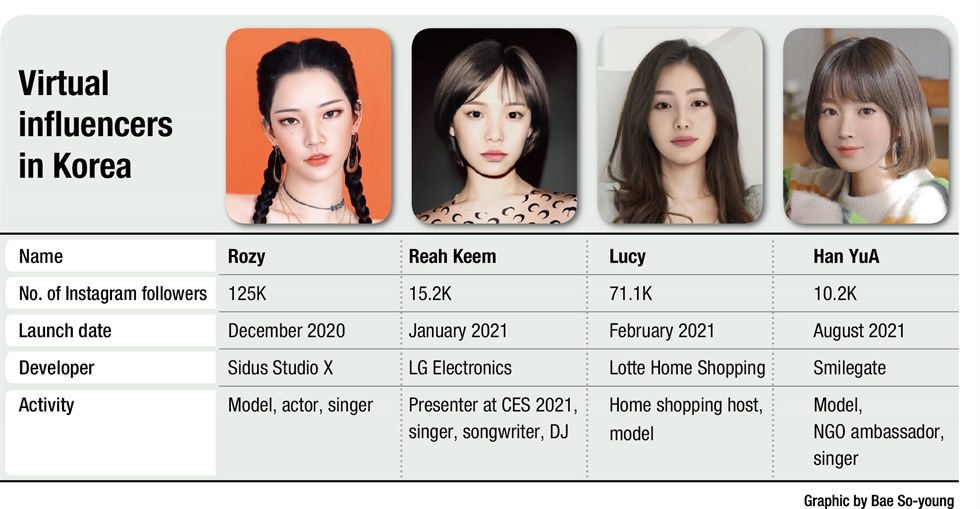Introduction to Korean Virtual Influencers
In recent years, South Korea has emerged as a global powerhouse in digital innovation, blending its rich cultural heritage with cutting-edge technology. One of the most fascinating phenomena to arise from this fusion is the rise of Korean virtual influencers—computer-generated personas who captivate audiences across social media and marketing platforms. These virtual influencers are not just animated figures; they represent a new form of digital celebrity that blurs the lines between reality and artificiality. In this article, we will explore the intricacies behind Korean virtual influencers, their creation process, cultural significance, commercial impact, and future prospects. By understanding these digital avatars, we uncover a unique lens through which to examine modern branding, technology, and Korean pop culture’s influence on the global stage.
The Art and Technology Behind Creation
Creating a Korean virtual influencer involves a sophisticated blend of artistic design, artificial intelligence, and real-time animation technology. Skilled designers craft hyper-realistic 3D models based on specific aesthetics, often inspired by K-pop idols or popular Korean drama stars to resonate with contemporary cultural trends. Animation studios then bring these avatars to life by programming facial expressions, gestures, and even voice synthesis that mimic human behavior. AI algorithms personalize interactions, making engagements feel authentic and dynamic on social media platforms. The seamless integration of these elements results in influencers who can participate in brand endorsements, virtual events, and real-time conversations, establishing them as interactive digital personalities instead of mere visual gimmicks.
Cultural Context and Appeal
Korean virtual influencers do not exist in a vacuum; their appeal is deeply rooted in South Korea’s vibrant entertainment culture and tech-savvy society. K-pop’s global rise has cultivated a fanbase that is highly responsive to idols’ aesthetics and narratives, lending virtual influencers a cultural familiarity. These avatars often embody idealized traits such as flawless appearance, charismatic charm, and modulated personalities that appeal to diverse demographics. Moreover, Korean culture’s acceptance of digital personas as part of everyday life—from gaming avatars to digital assistants—creates a social environment where virtual influencers can thrive naturally. This cultural compatibility amplifies their acceptance both locally and internationally, making them powerful ambassadors of Korean culture.
Marketing Strategies and Brand Collaborations
Brands have quickly recognized the commercial potential of Korean virtual influencers, leveraging their appeal to reach younger, digital-native audiences. Unlike traditional influencers, virtual counterparts offer unparalleled control over their image, behavior, and associations, which reduces risk and increases marketing precision. Companies collaborate with these influencers for product launches, fashion campaigns, and experiential marketing, capitalizing on their ability to generate viral content without the uncertainties tied to human personalities. Additionally, virtual influencers can engage in multiple simultaneous collaborations across different regions, maximizing brand exposure. Their data-driven insights allow brands to tailor messages and optimize interactions, creating a win-win dynamic for both creators and marketers.
The Ethical and Social Implications
The rise of virtual influencers raises important ethical considerations concerning authenticity, transparency, and societal impact. Viewers might struggle to distinguish between genuine human interaction and AI-driven engagement, potentially affecting trust and mental health. The idealized traits embodied by virtual influencers could contribute to unrealistic beauty standards and social comparisons. Furthermore, questions arise about representation and inclusivity, as many virtual personas reflect narrow aesthetic ideals. However, Korean creators are increasingly aware of these challenges and are experimenting with diverse avatars and transparent disclosures to mitigate negative effects. This ongoing ethical dialogue is crucial as virtual influencers become more integrated into cultural and commercial landscapes.
Looking Ahead: The Future of Korean Virtual Influencers
As technology advances, the future of Korean virtual influencers looks promising and multifaceted. With improvements in AI, virtual reality, and metaverse platforms, these digital personas will become more immersive and interactive, allowing followers to engage in three-dimensional virtual spaces and customized experiences. Korean companies are at the forefront of experimenting with metaverse concerts, virtual shopping assistants, and AI-driven content creation, all powered by these influencers. Moreover, the convergence of virtual and human celebrities may redefine entertainment paradigms, blurring boundaries further. The evolution of these influencers will continue to challenge our perceptions of identity, creativity, and connection in the digital age, positioning Korea as a leader in next-generation digital culture.
In summary, Korean virtual influencers exemplify a unique intersection of culture, creativity, and technology that shapes both digital marketing and modern entertainment. From their meticulous creation and cultural resonance to strategic brand partnerships and emerging ethical considerations, they reflect broader societal shifts toward digital integration. As this trend accelerates, these virtual personas will not only redefine influencer culture but also expand the possibilities of human interaction in an increasingly virtual world.
